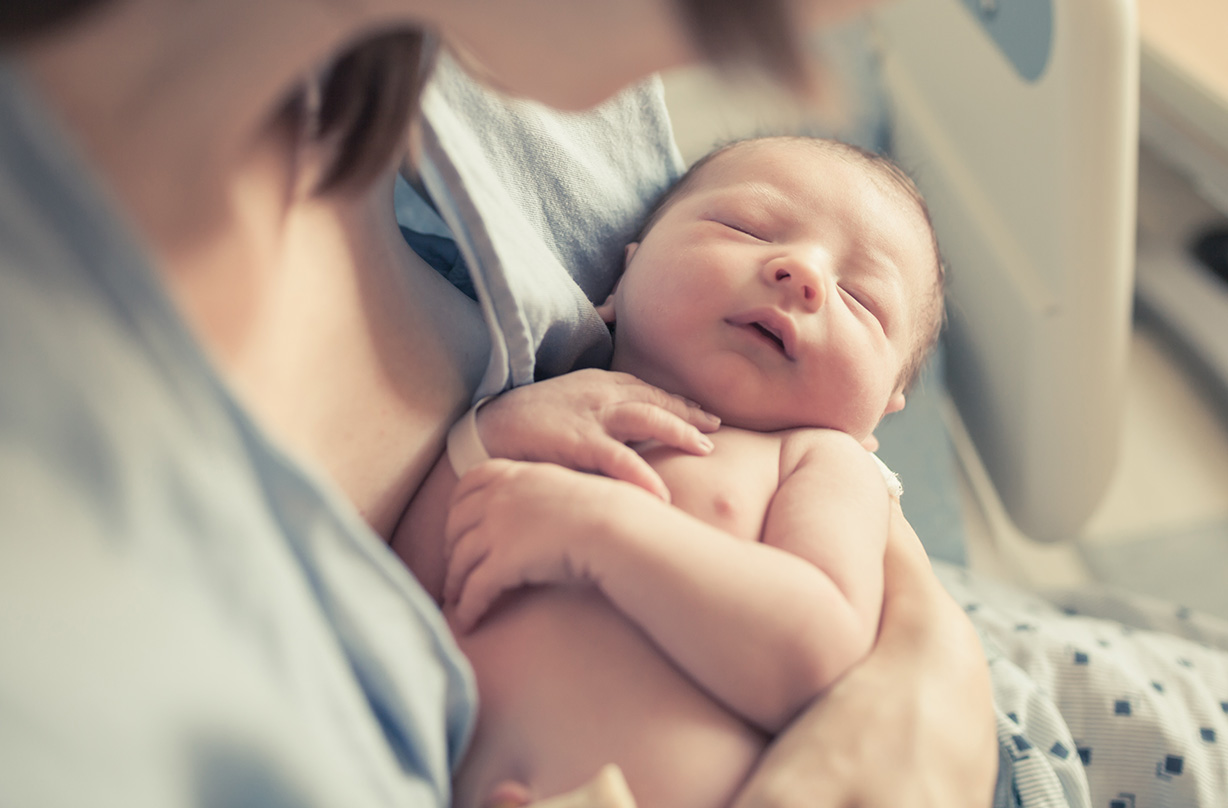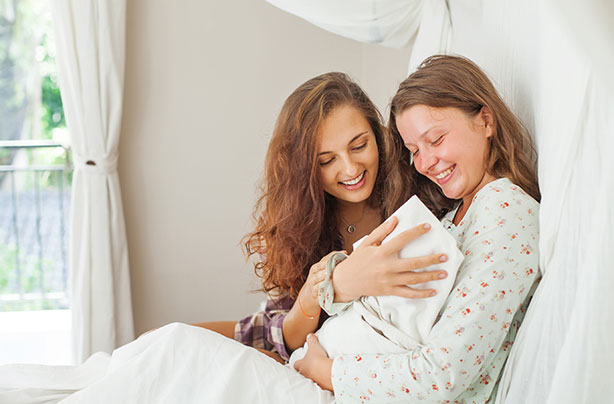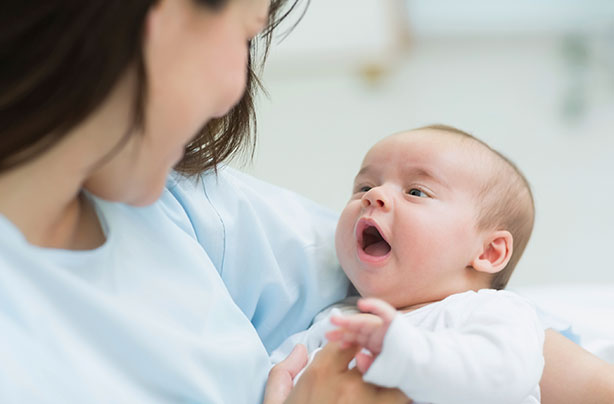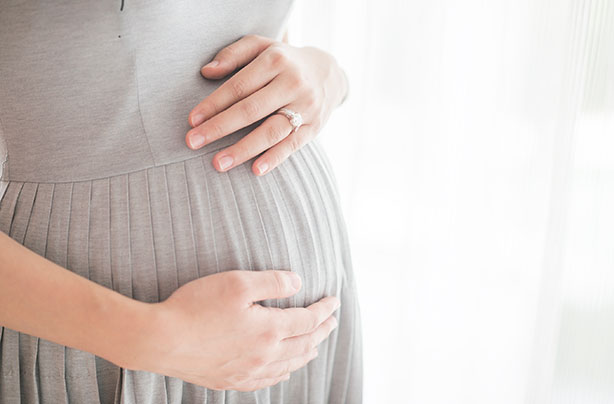Home births, hospital births and birthing centres: Your options explained
Many women assume that they'll give birth at their local hospital. But your midwife should discuss all the available options with you, regardless of whether this is your first baby or what sort of birth you've previously had.


From home birth to birthing centres, here's everything you need to know about birth plan options and what to expect in each environment.
Many women assume that they'll give birth at their local hospital, but there are several birth plan options available to choose from.
During your pregnancy, your midwife should discuss all the available options with you, regardless of whether this is your first baby or what sort of birth you've previously had.
Many celebrities including mum-of-two Sam Faiers have opted for home births and it was thought Kate Middleton would try it with her third pregnancy too.
Here we consider the pros and cons of home births, hospital births and birthing centres, to help you make the decision that's best for you.
Birth plan options - everything you need to know
Home birth plan

All the evidence, (and there's a great deal of it!) shows that in a straightforward pregnancy, it's as safe to opt for a home birth as to have a hospital delivery.
Women often think that any complications they had with a previous delivery will affect the birth this time round. But the fact is that mums-to-be who stay at home to have their babies will have far fewer interventions and are more likely to end up having a 'normal' birth.
GoodtoKnow Newsletter
Parenting advice, hot topics, best buys and family finance tips delivered straight to your inbox.
Your midwife will be trained in resuscitation, and carries oxygen to administer to the mum or baby in an emergency. They also carry drugs that will help control any excessive bleeding that may follow the birth.
What are the pros of a home birth?
- You're in a familiar, comfortable environment without the elements of uncertainty and fear that can sometimes occur when a woman arrives at the hospital, and these may inhibit or prolong labour. Being at home means you and your partner are more in control.
- You have the freedom to move around as you wish.You can have as many people with you as you choose, including any other children you have. Likewise, you may prefer the intimacy of knowing that random members of staff aren't going to walk in.
- If you're transferred to a hospital in labour, you're still less likely to have a Caesarean than a woman who's booked in for a hospital birth.
- You'll get one-to-one care from a midwife throughout your labour, and towards the end of labour a second midwife will arrive to give extra support.
What are the drawbacks of giving birth at home?
- Pain relief is limited, you can't have an epidural at home.
- You'll have to hire (or buy) a pool yourself if you want a water birth.
- If there are any complications, your midwife will quickly arrange for you to be transferred to a hospital.
- While being in your own home can often help to relax a woman, some mums-to-be still find it more reassuring to be in hospital.
Questions to ask before having a home birth What's your community midwife's homebirth rate? How many women have they transferred to hospital in labour? What's the episiotomy rate? Will they look after you in labour?
Hospital birth plan

Hospital is the safest place for mums-to-be who are considered high risk. This could include women who have medical conditions, such as a heart problem, insulin-dependent diabetes, or problems during pregnancy such as pre-eclampsia, or premature birth.
If it's anticipated that a woman or her baby will need a high level of medical care or a special care baby unit, a hospital is the appropriate place to give birth.
What are the pros of a hospital birth?
- Obstetricians work in the hospital, which means that there are the facilities to look after women who need a higher level of intervention with their care.
- There's the facility to do instrumental (forceps/ventouse) deliveries or a Caesarean.
- The full range of pain relief options are available, including epidural, which is sited by an anaesthetist.
- If you have other children at home, you may want a night or two away in hospital just with your new baby.
What are the drawbacks of having a hospital birth?
- You're more likely to end up with interventions such as an episiotomy, instrumental delivery, Caesarean section, a drip to speed up contractions, pain relief, and also have a higher risk of infection.
- You're less likely to get one-to-one care or care from a midwife you know, midwives on the labour ward may have several women to look after.
Questions to ask before having a hospital birth What's the Caesarean section rate? What proportion have normal births? What's the induction rate? Is there a shortage of midwives? What's the episiotomy rate?
Birthing centre birth plan

This is usually a much smaller unit with care provided by midwives. They're sometimes located in the same hospital as the maternity units where the obstetricians work, but often occupy a separate building.
They're not considered high tech, and are aimed at women with uncomplicated pregnancies and no anticipated problems in labour.
Are birthing centres safe?
This is a safe option for a low-risk pregnancy. Some units assess women to see if their health is appropriately 'low risk'. Emergency equipment and drugs are available, but a woman needing intervention would be transferred to a consultant-led unit.
What are the pros of a birthing centre?
- A 'normal' birth is more likely when women are cared for by midwives in a birthing centre or at home.
- You have access to a birthing pool.
- If you share housing: live with friends or family members, you may feel more comfortable using a birthing centre than staying at home.
- Birthing centres are often less 'clinical' than hospitals, described as a 'home from home'.
What are the drawbacks of giving birth in a birthing centre?
- There's no epidural facility.
- You'll need to transfer to hospital in labour if complications arise (although quite often it's nearby).
When to decide
Some women prefer to have a clear plan laid out, but if you're unsure about where to have your baby, you can wait until you're in labour before you decide. It might sound last minute, but once the midwife has been to your home and checked you over, see how comfortable you feel. If you're relaxed and everything seems to be straightforward, then there's no rush to go anywhere. But if you suddenly feel you need to be in hospital, then that's also fine.
There's no essential 'kit' to get in for a home birth, but a few old towels can be useful. You can always tell your midwife that you're planning a home birth, but see how you feel on the day. Nothing is written in stone!
The most important thing is that you feel comfortable with wherever you decide to have your baby. It may be that you're a perfect candidate for a home delivery or having your baby in a birthing centre. But if, after talking with your midwife, you don't feel comfortable with these options, keep on looking. Eventually, you'll find what feels right for you.
How did you decide where to give birth, did your plan go ahead or did your little one cause a last minute change? We'd love to hear your experiences and tips so head over to our Facebook page!

Jessica Dady is Food Editor at GoodtoKnow and has over 12 years of experience as a digital editor, specialising in all things food, recipes, and SEO. From the must-buy seasonal food hampers and advent calendars for Christmas to the family-friendly air fryers that’ll make dinner time a breeze, Jessica loves trying and testing various food products to find the best of the best for the busy parents among us. Over the years of working with GoodtoKnow, Jessica has had the privilege of working alongside Future’s Test Kitchen to create exclusive videos - as well as writing, testing, and shooting her own recipes. When she’s not embracing the great outdoors with her family at the weekends, Jessica enjoys baking up a storm in the kitchen with her favourite bakes being chocolate chip cookies, cupcakes, and a tray of gooey chocolate brownies.